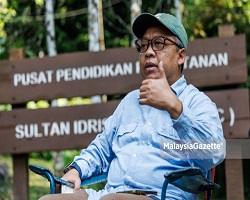Forests are resilient ecosystems, yet they are not immune to the effects of environmental change, and they deteriorate when their tolerance thresholds are crossed. By recognising these limits, we might potentially increase forest productivity several ways. The watershed forest can be trimmed, selectively harvested, and modified to increase the production of wood, water, and animals with minimal negative ecological impacts. Nonetheless, various activities of industrial forestry have been linked to a wide range of environmental implications on forest ecosystems. Forest harvesting, road constructions, manipulating cover types and species through silviculture and reforestation, and using mechanical, biological, and chemical means for fire, insect, disease, and competitive vegetation protection all fall under this category.
Human activities such as industrial manufacture and the usage of fossil fuels also impose environmental pressures on forests. Some of these strains have only local effects, while others cause global implications. For instance, airborne pollutants may be responsible for forest degradation in some region, but the expected global warming associated with a rise in the concentration of greenhouse gases in the atmosphere will threaten all forest types around the world. In the proximity of an industrial facility that emits stressful pollutants, a managed natural forest, a forest plantation, or an ecological reserve to research natural processes would be of low value, if any value at all.
Productivity of a site depends on factors such as the diversity of tree species present, the quality of the soil, and the average annual temperature and precipitation. The forest biomass is a significant reservoir of the overall nutrients of a specific forest land, alongside the soils. Harvesting forests might result in a net loss of nutrients at a location over the rotation period. This could have a major impact on biomass yield in the following crop at nutrient-poor areas. However, data on nutrient cycling in either temperate or tropical forests is sparse at best. Because of this, research into the effects of deforestation on soil productivity and subsequent harvests is essential.
The regeneration of a forest ecosystem following harvesting or other forms of disturbance is dependent on the nature and intensity of the disturbance, as well as the mode of reproduction of species found on the site. In many tropical environments, forest revegetation through seeding or vegetative techniques is quick, and it can be accomplished within a few months with a high species variety. When it comes to natural revegetation processes, the final result is typically a mixture of species that includes both economically useful and uneconomically inconsistencies, but from the perspective of industry, the goal is to quickly replenish forests with commercially beneficial species. This is essential, depending on the aims of forest management, to keep the process of forest renewal going by employing the right natural and artificial regeneration methods.
The degree to which forest ecosystems are affected by stress is proportional to the type of forest ecosystem—resilient or fragile—as well as the nature of the stress itself—its type, duration, and intensity. The Forest Degradation Trajectory which describes the pattern of recovery of damaged and stressed forest ecosystems, can be broken down into three circumstances. First, Self-Renewal. Following the removal of the stressor, forest ecosystems are able to renew themselves, reverting to a state not too dissimilar to its former condition, if not better, without any direct human intervention at all. Second, Rehabilitation. The forest ecosystem may need extensive years to recover naturally at the intermediate level of degradation, but this period can often be expedited via human intervention. Third, Restoration. When forest degradation reaches a certain point, the loss of forest cover or deforestation and species diversity, as well as soil deterioration and a subsequent drop in the overall productive potential of the site, render it nearly impossible to reverse the process over a human lifetime. When faced with such a catastrophic event, the rehabilitation process may take centuries without human involvement. Although it would be impossible to restore the forest to its "original natural" state, it would be possible to grow a forest with many different kinds of trees.
The genetic legacy of Earth is stored in abundance in the world's forests. More over half of all plant and animal species are found in tropical forests, which occupy just around six percent of Earth's land area. It appears that the species variety declines with increasing latitude. Large areas of forest land in the arctic regions may be controlled by a single species, in striking contrast to the tropical woods, which are home to hundreds of tree species. In keeping with the fifteenth (15th) Goal of Sustainable Development, which is to protect, restore and promote sustainable use of terrestrial ecosystems, sustainably manage forests, combat desertification, and halt and reverse land degradation and halt biodiversity loss, efforts to preserve future options must include protecting both species variety and ecological diversity.
National and worldwide forest stewardship is a socio-economic and environmental duty. With its long-term vision, technical skill, and dedication to sustained output, the forestry community can lead national and worldwide sustainable forest development. In order to implement this strategy, the international community will need to work together to create a suitable legislative and institutional framework, and to make the transition from forest management to forest ecosystem management.
Date of Input: 08/02/2023 | Updated: 08/02/2023 | masridien
MEDIA SHARING




























